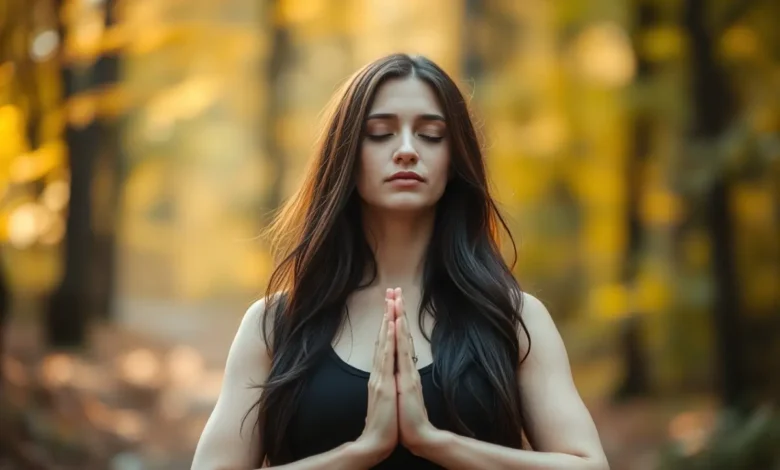Gentle yoga for relaxation

Gentle yoga for relaxation is a soothing and accessible practice designed to promote physical and mental well-being through slow, mindful movements, deep breathing, and meditation. Unlike more intense yoga styles, gentle yoga focuses on releasing tension, improving flexibility, and calming the nervous system, making it ideal for individuals of all fitness levels, including beginners and those recovering from stress or injury. By incorporating restorative poses and guided relaxation techniques, this practice helps reduce anxiety, enhance sleep quality, and foster a deep sense of inner peace. Whether practiced in the morning to start the day with clarity or in the evening to unwind, gentle yoga offers a holistic approach to relaxation and overall wellness.
Discovering Gentle yoga for relaxation: An Introduction to Calm and Wellbeing
Gentle yoga is an approach to the ancient practice that fosters inner peace and flexibility without pushing past limits of body or mind. Available both physically and online, gentle yoga offers individuals a tool to reduce stress levels and promote mental wellness.
Yoga may offer many physical health benefits for those struggling with their health, including arthritis and fibromyalgia sufferers. Yoga’s gentle movements and breathing techniques have been shown to alleviate discomfort while increasing mobility; additionally, yoga has also been proven effective at alleviating anxiety while creating feelings of emotional stability in those experiencing depression.
Yoga offers an alternative solution for managing anxiety and depression: its mind-body practice encourages participants to focus on slowing their breath and living in the present, thus shifting brain activity from its “flight or fight” response toward parasympathetic nervous system relaxation response.
No matter your current fitness level, gentle yoga classes offer something suitable. In Connecticut for example, several community centers and senior facilities offer tailored yoga programs such as Yin Yoga or Seated Serenity that cater specifically to individuals with limited mobility by offering seated postures that offer joint mobility and flexibility without the participant needing to get down onto the floor.
The Art and Science of Gentle yoga for relaxation: Bridging Mind and Body
Restorative Yoga, for those unfamiliar, is a gentle form of yoga designed to promote physical, mental and emotional relaxation. As opposed to more physically-intensive forms of yoga, restorative practices emphasize stillness by holding poses for longer durations and focussing on stillness rather than movement.
Yoga practice can help restore equilibrium to the nervous system, which may have become compromised from stress related to cancer diagnosis and treatment. Furthermore, practicing yoga promotes mindfulness which brings mind and body back together again.
This week’s blog offers a short Restorative Yoga sequence designed to promote relaxation. These simple movements can be performed anywhere – home or in the office – for stress management and self-care purposes.
Start off by finding a relaxing environment where you can focus without distraction. Take some deep calming breaths to get yourself warmed up, and slowly go through these movements. At the end, take time to assess how you’re feeling and celebrate your efforts!
Supported Bridge Poses To practice Supported Bridge Pose, begin by lying on your back with the narrow edge of your mat against a wall and placing a bolster or blanket stack under your sacrum to raise it off of the floor and rest your neck on top of this support. This pose is intended to relax your back while opening up chest, as well as increase energy and promote circulation; do this pose for five to ten breaths before slowly releasing from its hold.
Step-by-Step Techniques in Gentle yoga for relaxation: Postures and Practices for Daily Peace
Your morning can make or break your day. While sometimes our inbox of emails feels like a burden on our shoulders, other times we wake up feeling relaxed and refreshed–this latter feeling being particularly powerful when life becomes stressful or hectic. Yoga can help create this state of ease by strengthening mindfulness and relaxation techniques so even an average night’s rest or hectic week can provide us with peace and serenity needed for optimal functioning.
Gentle yoga is a slower-paced version of Vinyasa yoga that still manages to challenge practitioners with its gentle postures designed to rewire your brain and ease tension from your body, leaving you feeling more grounded throughout daily activities.
Seated Side Stretch:
Once in this restorative pose, your entire spine will be gently stretched in all directions for ultimate relaxation from head to toe. Perfect after a long day!
Child’s Pose:
This restorative posture is an excellent way to unwind back and shoulder muscles. By opening up the sacrum – a key joint between lower back and hips which holds long-held tension – Child’s Pose can release this tension and encourage its release. Begin by widening out knees with big toes touching, before bringing your torso between your legs, resting it against them with forehead on mat.
Building Your Daily Practice: Integrating Gentle yoga for relaxation into Everyday Life
Have you tried incorporating yoga into your daily life? If so, consistency is key! A regular practice can provide numerous benefits ranging from strengthening mind-body connection to stress reduction, as well as increased focus and awareness into daily activities.
Yoga is an holistic practice that encompasses many areas of health and wellbeing, but is best-known for its ability to promote calmness and relaxation. Combining breath control, physical movement and mental focus stimulates the parasympathetic nervous system which produces feel-good chemicals which provide feelings of well-being in your body resulting in feelings of relaxation, well-being and balance.
Gentle yoga poses and movements are designed to be less strenuous than its more intense styles, making it an excellent option for beginners as well as people with limited mobility or experiencing pain or discomfort. With the assistance of an experienced coach, gentle yoga sessions can be tailored specifically to meet each participant’s individual needs so they feel safe and supported during each session.
Establish Your Daily Practice: Integrating gentle yoga for relaxation into Everyday Life
But isn’t daily practice simply about doing something, such as writing a novel or script for film? A daily practice should instead involve setting aside time each day to focus on what matters to you – be it running, yoga, meditation or visiting an elderly aunt.
Mindfulness Beyond the Mat: Exploring the Broader Benefits of Yoga for Stress Relief
Yoga or mindfulness practices will make a huge difference in how you feel over time, no matter if that practice be yoga classes, meditation sessions, or other forms. Focus on developing a routine you can stick with over time while not being afraid to try different types of yoga or mindfulness practices.
For instance, if your yoga practice involves starting each session with sun salutations or asana (pose) that feels too intense or is often overdone, try being more gentle in order to see what unfolds. Or if you tend to move rapidly through poses on your mat, try moving more slowly while holding poses longer; altering how you approach each pose may also help make self-judgments more noticeable.
Recent research showed that participants who engaged in a twelve-week yoga programme experienced greater improvements to mood and decreased anxiety than a group who simply went for three walks per week. Furthermore, their brains contained significantly higher levels of GABA, which acts as a neurotransmitter to inhibit neural pathways associated with fearful situations, thus producing a relaxing effect.
Yoga practice regularly can improve flexibility, strengthen muscles without overstraining, prevent chronic pain and insomnia and promote weight loss with healthy metabolic rate. Yoga’s spiritual aspects–cultivating ethical values, compassion for others, self-discipline practice–may provide additional peace. While its physical, psychological and emotional advantages have long been recognized, more research needs to be conducted into its wider impacts in terms of spiritual, philosophical and ethical implications of the practice.
Cultivating Inner Peace: Techniques for Stress Management and Enhanced Wellbeing
Inner peace, or serenity and calm, is essential for mental resilience, empathy, and personal growth. Achieve it can be achieved by identifying stress triggers, practicing mindfulness meditation, prioritizing self-care practices, cultivating healthy habits, seeking support, and surrounding oneself with supportive connections.
Meditation and prayer can be powerful tools for cultivating inner peace. Mindful meditation practices like loving-kindness meditation help individuals focus on the present moment and develop feelings of compassion towards themselves and others. Furthermore, regular physical activities like yoga or tai chi can also reduce stress and improve well-being.
One essential component of inner peace is cultivating gratitude and positive affirmations as practices that help individuals recognize their achievements, appreciate what’s good in their lives and mitigate negative thinking that may cause anxiety or frustration. Establishing a regular practice of these skills will reinforce them over time and have lasting benefits on one’s ability to achieve and sustain inner peace.
Building and cultivating a solid support system is integral to maintaining inner peace. Reaching out to trusted friends, family members or therapists for guidance, reassurance and comfort during difficult times is invaluable – they serve as reminders that everyone experiences stress or challenges at some point in their life journey and that you’re not alone in your struggle.
Embracing a Journey of Tranquility: The Transformative Power of a Mindful Practice
Mindfulness meditation has quickly emerged as a potent weapon against disconnection in today’s culture of constant distraction and disconnection, offering real promise for mental wellbeing. Backed by scientific evidence, mindfulness practice has been shown to reduce stress, anxiety and insomnia symptoms while increasing sleep quality, focus and compassion. Once restricted solely to monasteries or retreats, nowadays mindfulness movement can be found more broadly accessible thanks to online resources, mobile apps, local classes and supportive communities.
Mindfulness encourages individuals to observe their thoughts, emotions and sensations without judgment in order to increase self-awareness and gain self-understanding. With mindfulness as their guide for personal transformation and development.
Inner peace also fosters a closer bond to spirituality, enabling individuals to explore their beliefs and sense of meaning more freely and easily, leading to increased joy and fulfillment and creating an overall healthier lifestyle.
Mindful practices extend far beyond introspective analysis to affect interpersonal dynamics as well. When practiced as group meditation and breathing exercises, they create an atmosphere of community support; at work mindfulness promotes an environment more conducive to active listening and empathic understanding.
Mindfulness is at the core of many psychological interventions, such as dialectical Behavior Therapy (DBT) and Mindfulness-based Relapse Prevention for Substance Use Disorders (MBRP). The latter helps people observe their emotions and behaviors instead of becoming trapped by them, developing the ability to respond skillfully with skillful action. Furthermore, MBRP offers emotional regulation skills as well as self-compassion practices that allow individuals to overcome cravings and triggers while supporting recovery over time.
FAQs :
What is Gentle Yoga for Relaxation?
Gentle Yoga for Relaxation is a slow-paced practice that focuses on simple poses, deep breathing, and mindfulness. It aims to reduce stress, improve flexibility, and calm the mind without placing too much strain on the body.
How does Gentle Yoga differ from other yoga styles?
Unlike vigorous forms of yoga (like Vinyasa or Power Yoga), Gentle Yoga emphasizes minimal movement, longer holds, and supportive props. The goal is to create a soothing experience that helps the body and mind relax rather than build intense strength or endurance.
Who can benefit from Gentle Yoga?
Gentle Yoga is suitable for people of all ages and fitness levels. It’s especially helpful for beginners, individuals recovering from injuries, older adults, or anyone seeking a less strenuous, more meditative practice.
What should I expect in a Gentle Yoga class?
Classes often begin with mindful breathing and include slow, simple poses. Instructors typically encourage using props like blankets, blocks, or bolsters to support the body. The pace is unhurried, allowing time to transition between poses comfortably.
How often should I practice Gentle Yoga for relaxation?
You can practice Gentle Yoga as often as you like—some people enjoy daily sessions, while others find benefit in one to three sessions per week. Consistency is key to experiencing long-term stress relief and flexibility improvements.
Is Gentle Yoga effective for stress and anxiety relief?
Yes. By focusing on deep breathing, mindful movement, and relaxation techniques, Gentle Yoga helps lower cortisol levels (the body’s stress hormone) and promotes a sense of mental and physical calm.
___
References:
“Yoga for Stress: Breath, Poses, and Meditation to Calm Anxiety”
“Reducing Stress with Yoga: A Systematic Review”
“Restorative Yoga: Benefits and Poses to Try”





